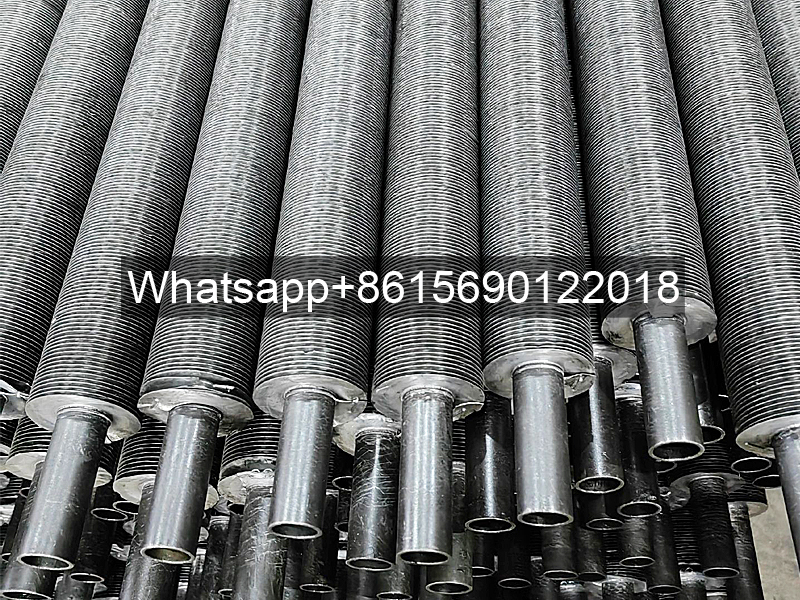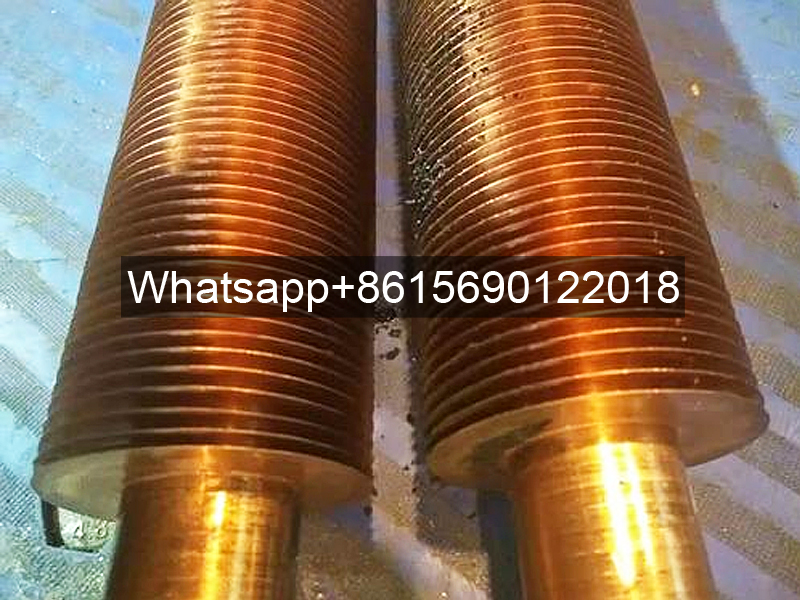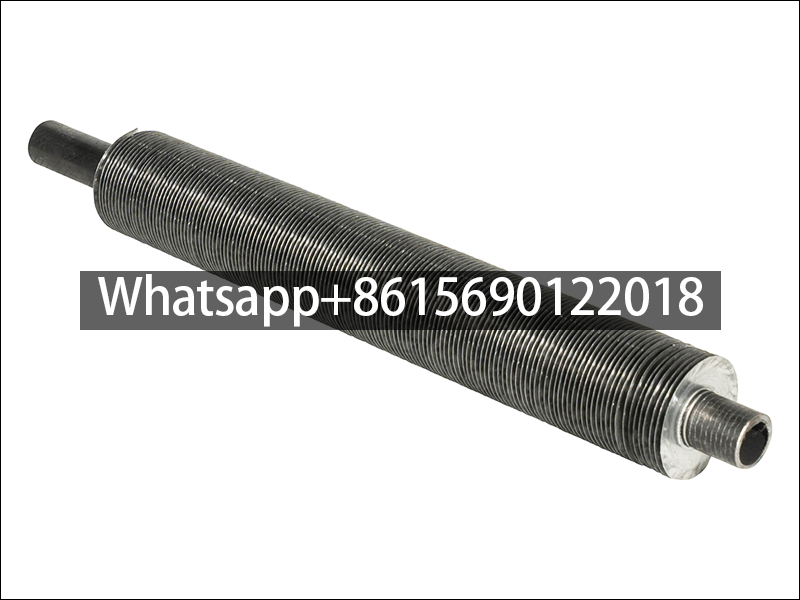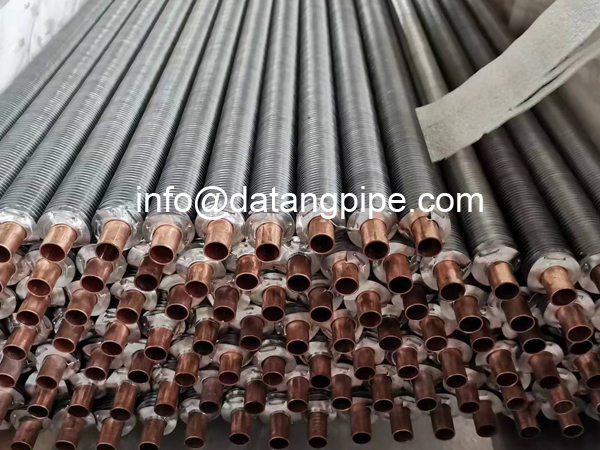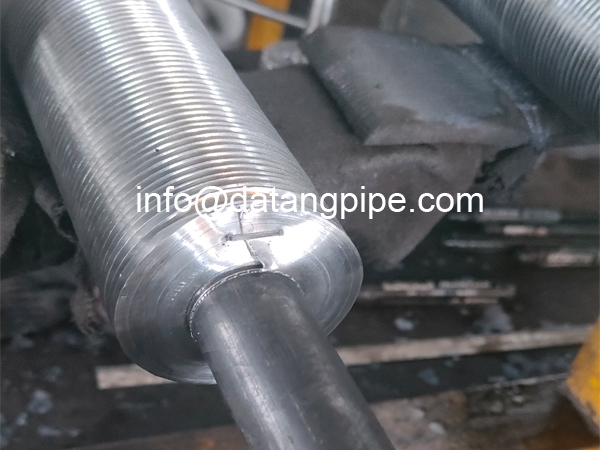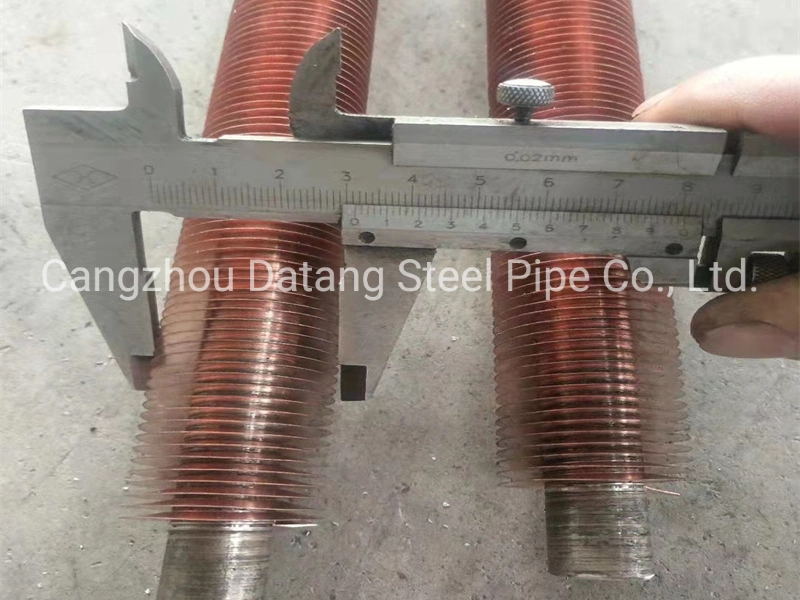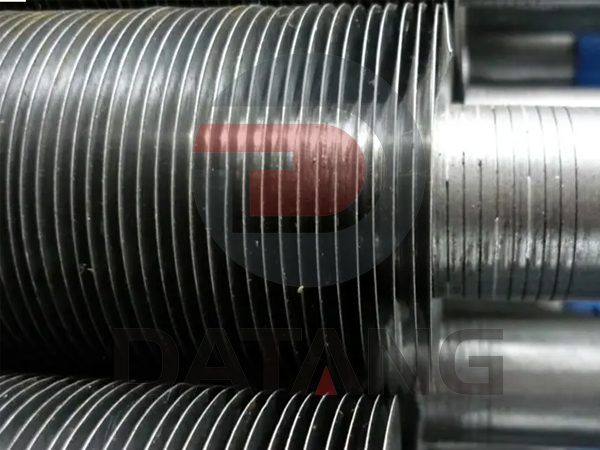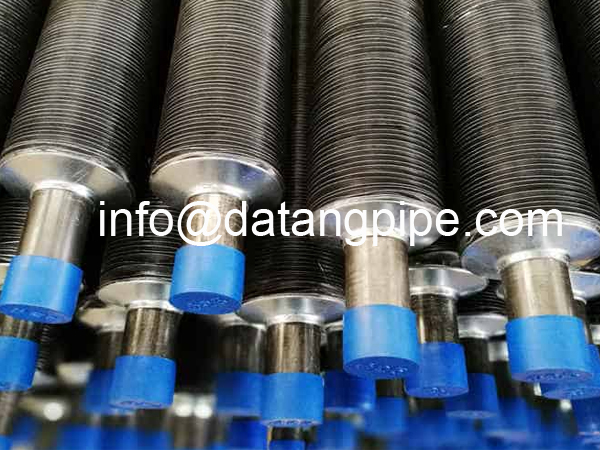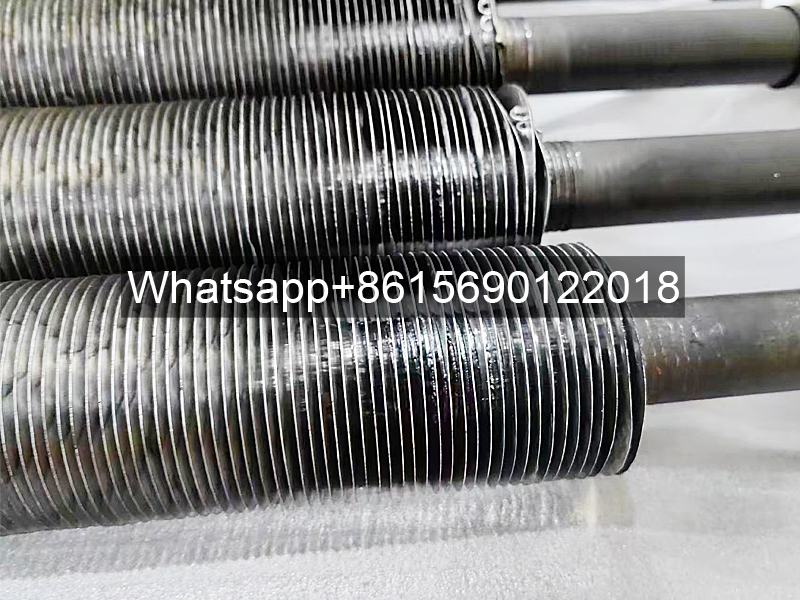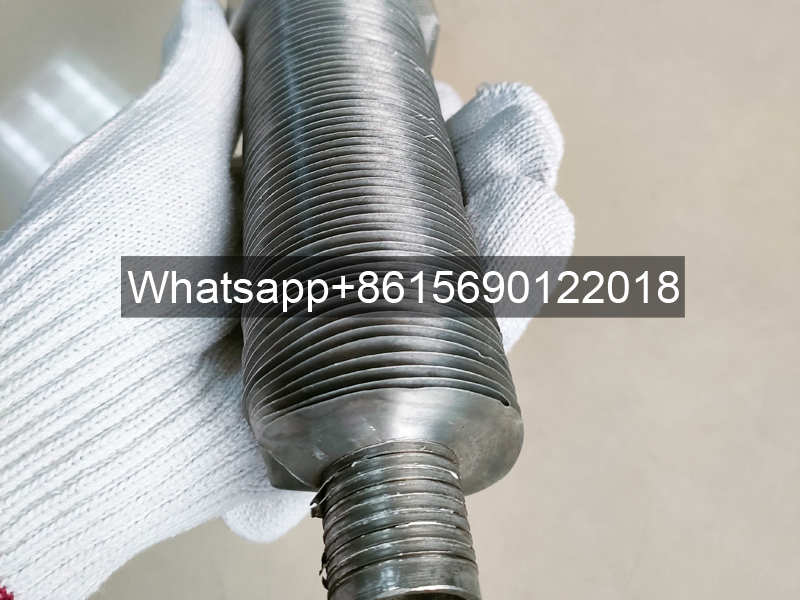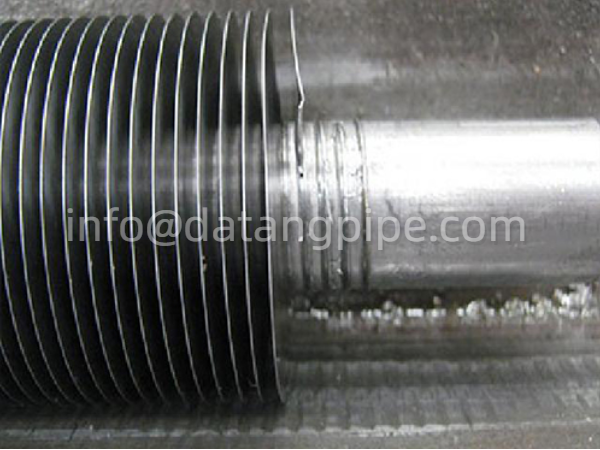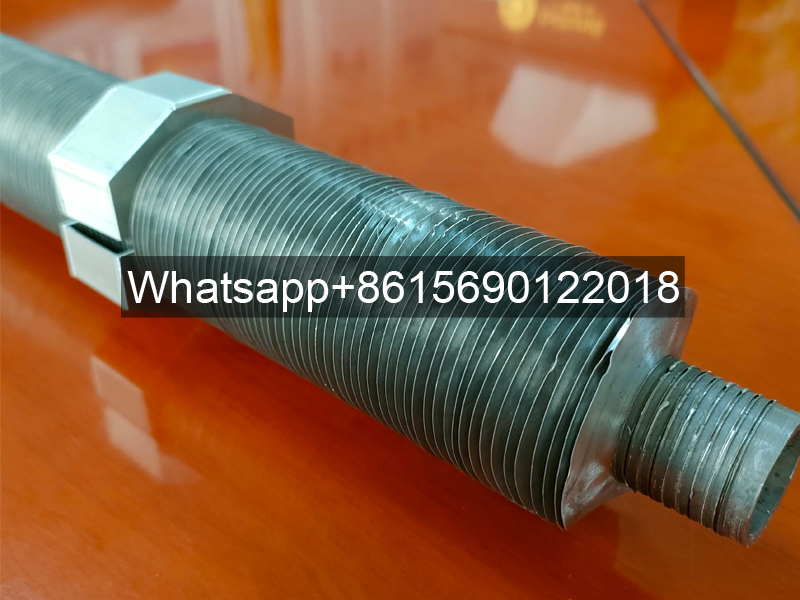G Type Finned Tube(Embedded Fin Tube) for Heat Exchanger
G-Type finned tubes are known as embedded-fin tubes where g means grooved. They are formed by twisting a fin strip made of copper or aluminium into a machined groove and back-filling to secure the lock. Base tube material is filled. The G-type fin tube is strong as compared to other tubes. Hence, it is widely used where high-temperature heat transfer is required.
Quality Control for G Type Embedded Finned Tube
* Inspection and Tests Performed * Hydrostatic Test
* Chemical Composition inspection * No-destructive Test
* Surface and Dimension Test
* Mechanical Properties Test(Tensile Strength, Yield Strength,Elongation, Flaring, Flattening, Hardness, Impact Test)
Embedded G Type Finned Tubes by Material
Embedded G Type Finned Tube by Application
Embedded G Type Finned Tube Materials
G Type Embedded Finned Tube is combined with two different materials
Core tube material:
carbon steel, low alloy steel, stainless steel, brass, copper, copper-nickel alloy, aluminum bronze, nickel alloy.
- Carbon steel: A179, A192, SA210 Gr A1/C, A106 Gr B
- Stainless steel: TP304/304L, TP316/TP316L/316Ti, A789 S31803/S2205
- Copper: UNS12200/UNS14200/UNS70600, CuNi70/30, CuNi 90/10
Fin material:
- Aluminum (Alu.1100, Alu.1060)
- Copper
- Steel
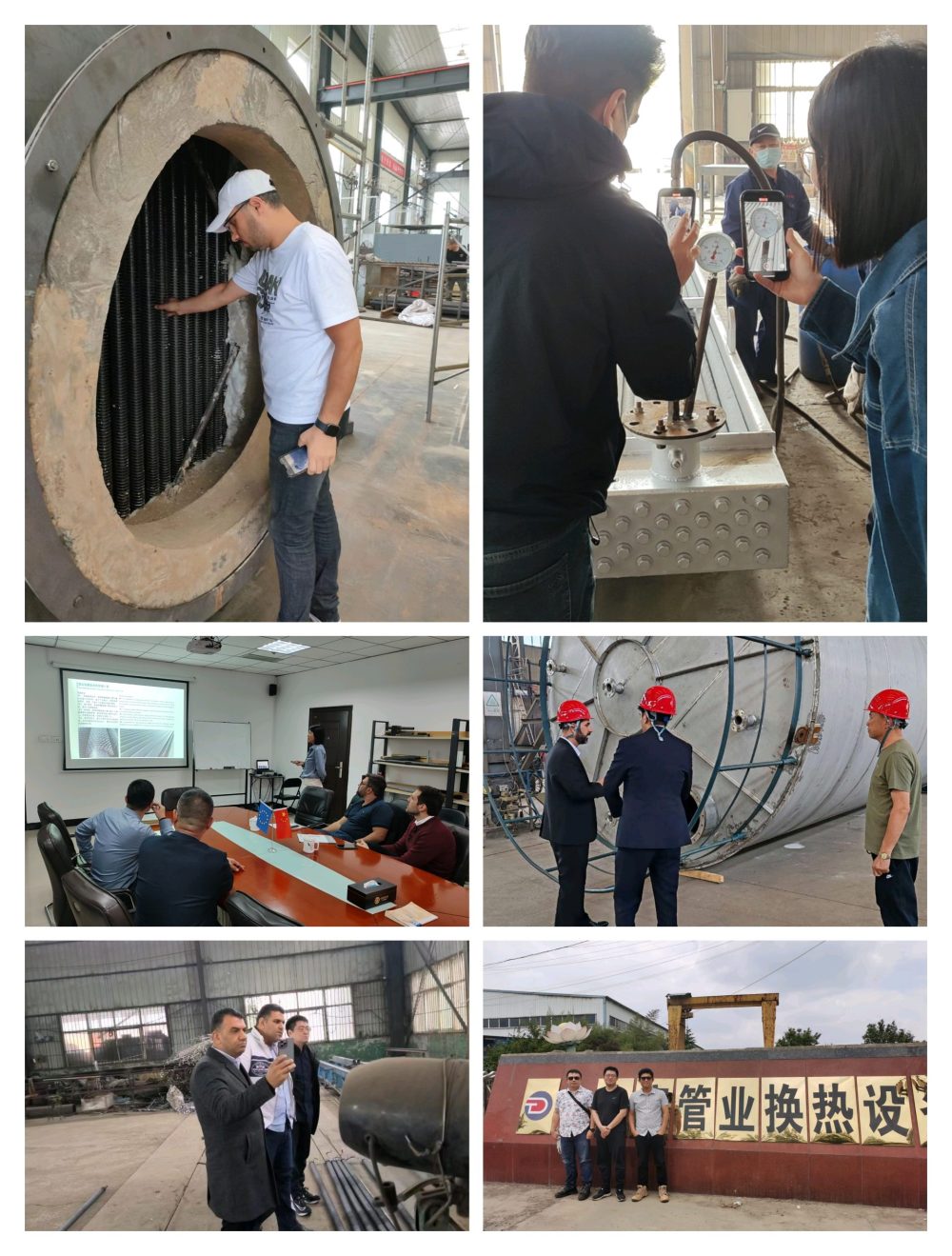

In G-type finned tubes, the fins are prepared by embedding the metal strip into a groove. The latter is formed on a base tube. Placing the fin on it, back-filling is done – resulting in strong attachment of the fins to the base tubes. Hence, the name G-Fin Tubes has come up. The three processes mentioned above are carried out simultaneously. Maximum heat transfer is expected out of the g-fin tubes as the fins are strongly attached to the base tube.
Datang Fin Tube Technical Parameters
| Type | Description | Base tube O.D. (mm) | Fin pitch (mm) | Fin height (mm) | Fin thick |
|---|---|---|---|---|---|
| Embedded | G – type fin tube | 16 – 63 | 2.1 – 5 | <17 | ~0.4 |
| Extruded | Single metal combined metal | 8 – 51 | 1.6 – 10 | <17 | 0.2 – 0.4 |
| Low fin tube t – type fin tube | 10 – 38 | 0.8 – 2 | <1.6 | ~0.3 | |
| Bamboo tube corrugated tube | 16 – 51 | 8 – 30 | <2.5 | / | |
| Wound | I/II/III type fin tube | 16 – 63 | 2.1 – 5 | <17 | ~0.4 |
| String | String fin tube | 25 – 38 | 2.1 – 3.5 | <20 | 0.2 – 0.5 |
| U – type | U – type tube | 16 – 38 | / | / | / |
| Welding | HF – welding fin tube | 16 – 219 | 3 – 25 | 5 – 30 | 0.8 – 3 |
| H/HH type fin tube | 25 – 63 | 8 – 30 | <200 | 1.5 – 3.5 | |
| Studed fin tube | 25 – 219 | 8 – 30 | 5 – 35 | φ5 – 20 |
The G type finned tubes usually work at high temperature (with around 400 degree Celsius) applications. Made of copper, carbon, or aluminium, these fins have comparatively less resistance towards atmospheric corrosion. On the other hand, mechanical resistance is acceptable. Stainless steel and carbon steel fin materials are also used, but particular processing and tooling of the steel fin strips are necessary. Air coolers, radiators, etc use the g-fin tubes.
G Type Embedded Finned Tube is that the fin strip is tension wound and placed in the groove cut into the tube with appr, 0.4mm groove depth, then the bottom of the fin is guided into the groove and backfilled with base tube Firmly, finally lock the fins in place by rolling the grooves enclosed in the bottom of the fins. The maximum operating temperature of G Type Embedded Finned Tube can reach 400°C.
Embedded G Type Finned Tube Advantages
Transferring heat from a hot fluid into a colder fluid through a tube wall is the reason many of us use finned tubes.
But you may ask, what is the major advantage of using a finned tube? Why can’t you just use a regular tube to make this transfer? Well you can but the rate will be much slower.
By not using a finned tube the outside surface area is not significantly greater than the inside surface area. Because of that, the fluid with the lowest heat transfer coefficient will dictate the overall heat transfer rate. When the heat transfer coefficient of the fluid inside the tube is several times larger than that of the fluid outside the tube the overall heat transfer rate can be greatly improved by increasing the outside surface area of the tube.
Finned tubes increase outside the surface area. By having a finned tube in place, it increases the overall heat transfer rate. This then decreases the total number of tubes required for a given application which then also reduces overall equipment size and can in the long-run decrease the cost of the project. In many application cases, one finned tube replaces six or more bare tubes at less than 1/3 the cost and 1/4 the volume.
For applications that involve the transfer of heat from a hot fluid to a colder fluid through a tube wall, fin tubes are used. Usually, for an air heat exchanger, where one of the fluids is air or some other gas, the air side heat transfer coefficient will be much lower, so additional heat transfer surface area or a fin tube exchanger is very useful. The overall pattern flow of a finned tube exchanger is often crossflow, however, it can also be parallel flow or counterflow.
Fins are used to increase the effective surface area of heat exchanger tubing. Furthermore, finned tubes are used when the heat transfer coefficient on the outside of the tubes is appreciably lower than that on the inside. In other words, heat transferred from liquid to gas, vapor to gas, such as steam to air heat exchanger, and thermic fluid to air heat exchanger.
The rate at which such heat transfer can occur depends on three factors – [1] the temperature difference between the two fluids; [2] the heat transfer coefficient between each of the fluids and the tube wall; and [3] the surface area to which each fluid is exposed.
Finned tubes are used because they help
Increase Heat Transfer Rate
A finned tube exchanger typically has tubes with fins attached to the outside. Usually, there will be some liquid flowing through the inside of the tubes and air or some other gas flowing outside the tubes, where the additional heat transfer surface area due to the finned tube increases the heat transfer rate. In a crossflow fin tube exchanger, the fins will typically be radial fins and they’ll either be circular or square in shape.
Improve Heat Transfer Coefficient
By not using a finned tube, the outside surface area is not significantly greater than the inside surface area. Because of this, the fluid with the lowest heat transfer coefficient will dictate the overall heat transfer rate. When the heat transfer coefficient of the fluid inside the tube is several times larger than that of the fluid outside the tube, the overall heat transfer rate can be greatly improved by increasing the outside surface area of the tube.
Increase Outside Surface Area
By having a finned tube in place, it increases the overall heat transfer rate. Finned tubes increase the outside surface area. This decreases the total number of tubes required for a given application which then also reduces overall equipment size and can in the long-run decrease the cost of the project.
Finned tube heat exchangers are used in a variety of applications, and more so as industrial heat exchangers. An air heat exchanger like the evaporator coil in an air conditioning unit is typically a fin tube exchanger. Another common fin tube air heat exchanger is the car radiator. The purpose of the car radiator is to cool the hot water in the tubes with the air passing through the crossflow. On the contrary, the air conditioner evaporator coil has the purpose of cooling the air passing through it. The finned tubes that are manufactured at Kainon Boilers, use high grade carbon steel, stainless steel, copper, brass, and aluminum. Our finned tube exchangers are designed to meet the specific duty condition, temperature and pressure of the fluids.



